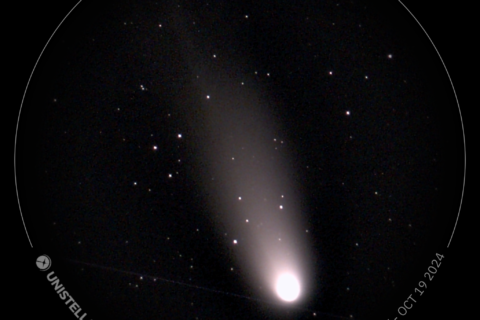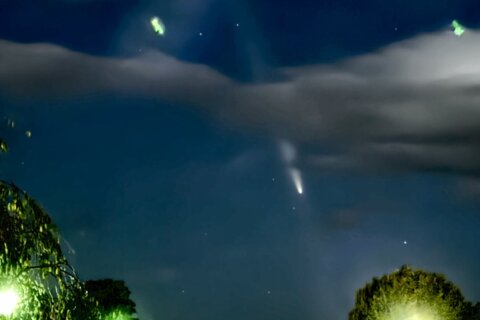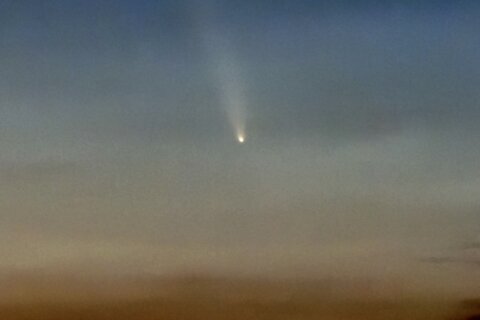WASHINGTON — It is not often that one can personally witness history in the making as it happens. But thanks to the Internet all of us can tune in now to watch a spacefaring voyage of discovery that will never occur again. Today at 11:24 p.m. EDT a piano-sized spacecraft is 1 million miles and two days out from fulfilling the dream of its creators, operators and countless followers.
On Tuesday, July 14, 2015, at approximately 7:49 a.m. EDT, history will be made after a voyage of nine and a half years and almost 3 billion miles finally comes to fruition. NASA’s New Horizons spacecraft will perform the first ever flyby of the dwarf planet Pluto and its complex system of moons at 31,000 miles per hour and a distance of 7,800 miles.
For the past week, we have seen images of Pluto and its main moon Charon that have amazed and confounded all. “Scientific” terms such as the Whale, Donut and Heart have been used to describe never before seen features on a world that is becoming clearer in view and more complex as to what we are seeing every passing day.
When New Horizons launched on January 19, 2006, Pluto was classified as one of the nine planets in our solar system. In a still controversial move, the International Astronomical Union (IAU), the organization responsible for naming all objects in the solar system, reclassified Pluto as a dwarf planet on Aug. 24, 2006.
New Horizons has a definite link to the DMV as it is managed and operated by our very own Johns Hopkins Applied Physics Laboratory in Laurel, Maryland. The stellar team of scientists and engineers has persevered through the years and miles to get New Horizons on target and poised for a bonanza of science data. But is has not been easy and recent events show why.
Everyone connected with and following the mission held their collective breath on July 4 when it was reported that New Horizons had suffered an anomaly. At 1:54 p.m., New Horizons lost communication with Earth. As designed for such an occurrence, New Horizons switched to its back-up computer and went into “Safe Mode.” Mission controllers and team members scrambled to reestablish contact with the spacecraft and find out what went wrong.
Complicating efforts to find out what went wrong and how to repair it is that New Horizons is so far away from Earth. Traveling at the speed of light (186,000 miles per second) it takes radio signals NINE HOURS for a two-way message to be sent and received. There is no way that real time commands can be used to control New Horizons so a lot of automation is built into the primary and back up computers on board the spacecraft.
During a teleconference held on July 6, the mission team stated “that within 90 minutes communications were reestablished with the spacecraft, the cause was found and corrected, and New Horizons was back on line.” The spacecraft was found to be in excellent health and ready for the flyby phase which was set to begin on July 8.
As explained by the Principal Investigator, Dr. Alan Stern, Southwest Research Institute (SwRI), “Science stops when the spacecraft goes into Safe Mode. Some science was lost on Saturday, Sunday and Monday.” Dr. Stern also stated that, “There was zero impact to top priority science objectives and (the anomaly) was a speed bump in the total return of the mission.”
Fortunately the anomaly, which was traced to the primary computer being overburdened by multiple tasks, did not occur during the flyby phase or flyby itself. Science operations resumed on July 7 when New Horizons began to acquire science data again and send it to Earth.
During much of the flyby, New Horizons will not be transmitting data to Earth so it can concentrate solely on data acquisition. NASA has advised: “The New Horizons spacecraft will send a preprogrammed signal after the closest approach. The mission team on Earth should receive the signal by about 9:02 p.m. When New Horizons ‘phones home,’ there will be a celebration of its successful flyby and the anticipation of data to come in the days and months ahead.”
Humanity should see the first flyby results on July 15. The New Horizons team anticipates “it will take about 16 months to get all of the new data from the flyby.” This is directly due to the immense distance involved which reduces data transmission rates to 2,000 bits per second. The wonders we shall see and the data analysis to be conducted will enrich our knowledge of this marvelous world, its moons and more distant cousins.
There are currently four other known dwarf planets similar to Pluto and there may be as many as 100 or more beyond the orbit of Neptune in a region of the solar system known as the Kuiper Belt. After the flyby of Pluto, New Horizons will be commanded to commence a follow on mission to a Kuiper Belt Object (KBO) that has been identified by the Hubble Space Telescope. The decision is yet to be made as to which KBO to fly to but that should be decided in the near future.
Be it a planet or dwarf planet, Pluto is the last of the original nine planets to be visited by a spacecraft and completes humanity’s first reconnaissance of them. I am fortunate to have witnessed in my lifetime the groundbreaking missions to the other planets and Apollo to the Moon. This is a special time in space exploration that will not be soon repeated – the first ever close up look at a distant world.
Tune in to history being made and enjoy the ride. You will be glad you did.
You can buckle up with New Horizons on Twitter, Facebook and here at WTOP.
Follow me on Twitter @SkyGuyinVA and my daily blog. You can email me at skyguyinva@gmail.com.







